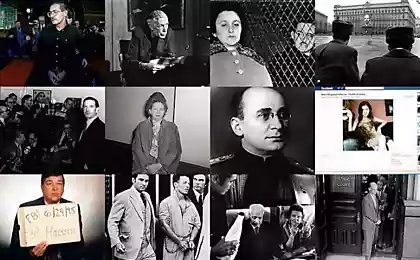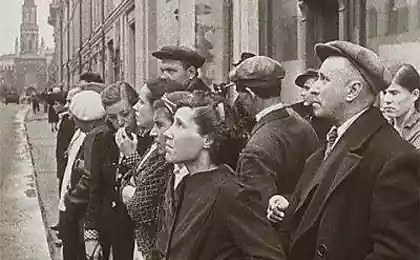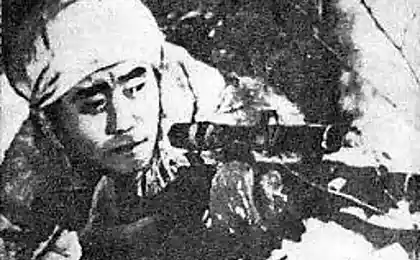1610
Sweets of the Soviet Union (8 photos)
Soviet sweet table was varied, as if in an attempt to compensate for the deficit of the general grocery and create an image of "sweet" socialist life. The irony of the phrase is not an attempt to discredit the current reality, but rather the truth existed and then drinking the feeling of "celebration of life." And it is in the creation of this feeling Soviet cooking quite succeeded.
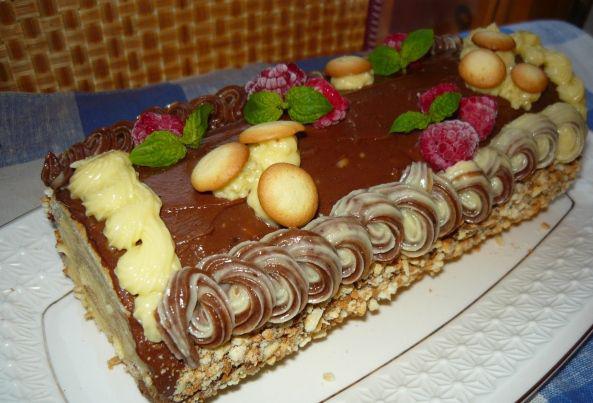
Dessert Soviet diet - a living testimony to the evolution of our gastronomy of the XX century. In less than 70 years old sweet table has changed dramatically, and far away from the traditions of the national cuisine in an eclectic, but "rich" in the view of the culinary arts. And remember it made us curious film in the series "Made in USSR", in which we are involved with Olga as experts. Filmed TV company "Mir", he is called - "The sweet life».
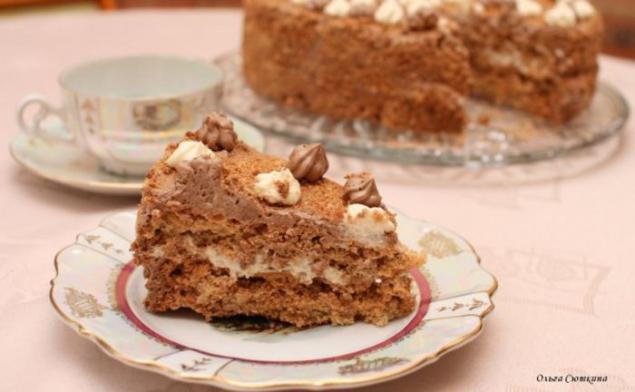
That shot documentary - really informative. They tried to do a good job. I (already outside the film) I would like here to elaborate on that Soviet "dolce vita".
Indeed, the historical Russian cuisine typical of very limited use of sweets. In the mass, democratic table even at the beginning of the XIX century there were no cakes, creams or souffle. At the same time no one and did not mean to be called a Russian dessert meager. Just fanciful desserts role it played a fresh and canned fruits and berries, candy, pies, cakes, firewood, puddings, jelly, etc.
But little by little, gaining elegant desserts tastes of the Russians. And by the end of the XIX century the cake - an indispensable attribute of the holiday table. Say Molokhovetz in this period of more than 60 names. That's not counting all eclairs, mousses and jellies. There is much debate about whether they were part of the massive power of the population, but to deny their popularity in pre-revolutionary Russia is impossible.
The attitude to the Soviet regime it was initially wary. And it's not just that in the 20 years of good butter and cream were not a frequent visitor in the kitchen of our compatriots. There is, apparently, some other reason. The cake itself - did not immediately went into our diet. Here's a look - in the "Book of Tasty and Healthy Food" in 1939, only two mentions of it - "Cake Cookies" and "cheese cake". And he and the other left a strange impression of food, collected from improvised. But in the 1953 edition of all falls into place. There are familiar sponge cakes, almond, lemon, sand, vanilla, etc.
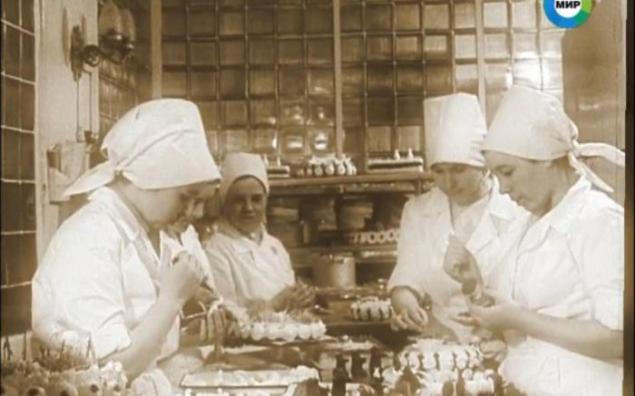
The end of the '50s and' 60s - this is the era heyday of Soviet and cakes. In 1956, workers of the Kiev confectionery factory im.Karla Marx [1] Konstantin Petrenko and Nadia Montenegro established the Soviet legend sweet - the cake "Kiev". Air-nut cakes, of which he was a (applied to 5 varieties of nuts) can of course be played today and in the home. But then a special industrial oven allows for a unique result. Also used for making cakes pre-fermented whites.
"Kiev" cake - a vivid example of Soviet-style "rich" food: 1 kg cake is not less than 600 g of cream and 400 g of protein a blank nut. It consists of two air-nut meringue cakes with layers of cream. Top - also cream with all sorts of patterns. On both sides - nut crumb. In general, such a symbol of socialist abundance.
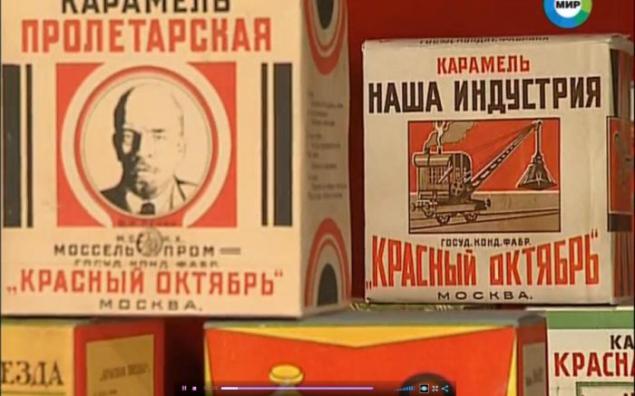
In the mid-1960s technology of the "Kiev" cake was approved Minpischepromom USSR. In accordance with the prescription of the products included cashew nuts - are a largely determines its unforgettable taste. However, it is clear that this is an expensive ingredient, clearly not typical of Soviet cuisine. The explanation for this contradiction is simple. Mid-50s - the period of our active cooperation with India. Interested in the development of all spheres of the economy after independence, the government of the country in the face of the Soviet Union found an ideological ally on the basis of joint struggle against neo-colonialism. Soviet assistance to India is most clearly manifested in the creation of modern heavy industry. So just by 1961 in the country with our support it was built 8 large mills. In general, during the years 1955-60 the USSR had India's economic assistance in the amount of 681 million. Dollars. It is clear that the payment of this assistance shall not in hard currency, and rupees, which could buy only the traditional items of Indian exports - textiles, tea and cashew nuts are the same.
Soviet confectionery industry was literally "littered" these nuts are used for a wide variety of dishes. However, this period of "nut" abundance soon ended - Indians quickly realized that cashew can be delivered and for the currency. This was done at the expense of barter with the Soviet Union, which were absolutely not competitive in the free market prices. As a result, cashew recipe in the "Kiev" cake gradually replaced by hazelnuts. In place of that will soon come cheap peanuts.
Egg Cream (known as cream Charlotte) in this cake to 70 years at the request of sanitary inspectors is replaced by the creamy-buttery (heavier and saturated). And in the late 80's into it (as well as all other cream cakes) will add a cheap vegetable oil, palm oil, etc.
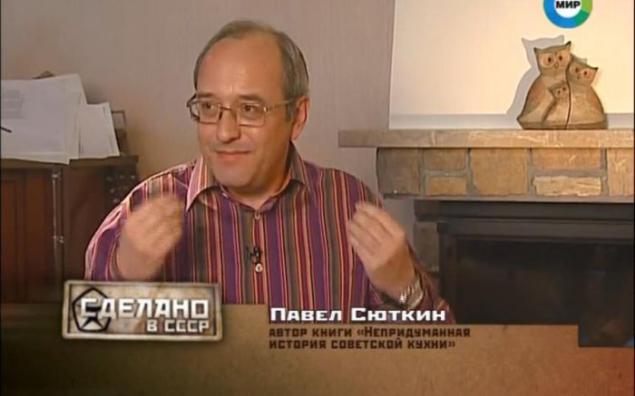
But back in the 50s. It was then on the shelves, new cakes and pastries - "Fairy Tale", "Abrikotin", "Cornucopia" baskets with cream. Pretentiousness of these products is consistent with the late-Stalinist Empire style in architecture and art. Indeed, while the cake was more than just a sweet dessert, it was a symbol of prosperity and wealth. These biscuits with oil rosettes survived to the late-Soviet period, when the main thing was to buy them in checked where honestly made of butter cream instead of margarine.
But public tastes gradually changed. And in the mid-60s confectionery fashion trends already meets the new socialist reality. "Before, cakes made in the form of flower baskets, a basket with mushrooms or a cornucopia from which poured cream chrysanthemum, roses, magnolia. Such a cake in appearance can be matched situation room and table setting in the style of Baroque, Rococo XVI-XVIII centuries, but now against the backdrop of modern interiors and new appointments he did not fit into the overall ensemble, "- wrote in 1969 the magazine" Food ».
"Pastoral mush, pretentiousness and fussiness, completely prevailed in the confectionery shops in the recent past, now given way to a new thematic content in the product design. The plant powdery confectionery Leningrad created, for example, cakes, "bride", "groom", "Circus." They have no bad taste sweet. Elegant oval cake "bride" all white. His finish - white roses of different sizes. In the "Bridegroom", somewhat similar in appearance to the previous cake, dominated by dark colors. Round cake "Circus" is decorated with figures of clowns »
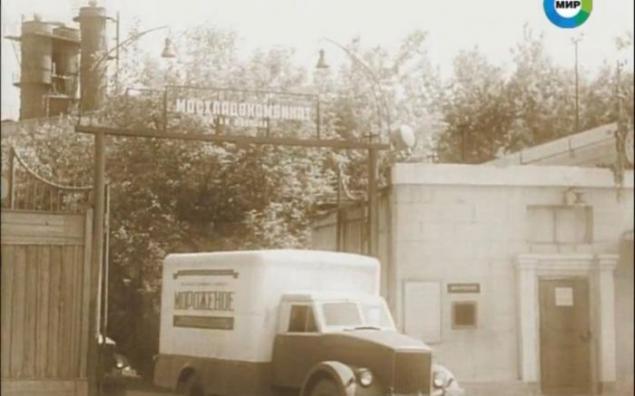
Many of these experiments has sunk into oblivion. But something remained in the Soviet kitchen, becoming one of its symbols. In 1978, a group led by the Chief pastry pastry shop Moscow restaurant "Prague" Vladimir Mikhailovich Gural'nik creates a cake recipe "Bird's milk". It should be emphasized that the same name candy condensed milk with agar that time more than one year issued by the Moscow confectionery factory "Rot Front". However, attempts to modify the "cake to" failed. Here's how he talked about this V.Guralnik:
- The candy - delicious, and large volume - candy candy, gets stuck in your teeth! Half a beat! Introducing the cream, beaten egg whites, the proportion changed ... Replace seaweed gelatin agar - so now it is used everywhere, and then the exotic was terrible! Finally, after thousands of experiments the substance was unusually light and delicate.
The result was developed semi-finished biscuit-whipped. Due to the fact that the filling had long boil down, I had to replace gelatin (which is already folded at 100 degrees) on agar-agar (melting point about 120 degrees). According to the technology as confectionery mass had to boil down at 117 degrees - no more, no less.
Although cake recipe quickly sold to restaurants and factories, it was the most delicious candy is in the restaurant "Prague", which from the beginning of the 80s every day along the Arbat was allowed all buyers. And it was worth it! Strictly seasoned recipe (egg white, condensed milk, agar-agar), and the technology of preparation; a layer of air biscuit, air souffle and a thin layer of chocolate - all brought a cake worthy of glory. First shop produces 50-60 cakes a day, but soon had to increase production to 500 pieces. And the recipe was distributed throughout the USSR via Mosrestorantrest.
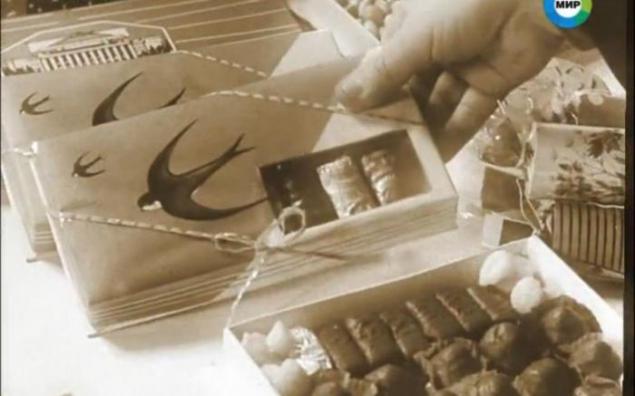
Restaurant associated with said origin and history of another famous cake. Open in 1955, the restaurant "Prague" was originally a "focused" mainly on Czech cooking. To study the experience regularly organized exchanges, trips chefs. Apparently, during one of the visits of Czech colleagues, and there was a prototype of the cake "Prague". In fact, it is somewhat simplified and modified version of the Austrian cake "Sacher". Here it was later arranged production of not less than the popular "Wenceslas" cake.
And then it would be appropriate to reflect: why the Soviet Union itself when all those cakes - "Kiev", "Prague", "Flight" (issued in catering) - rarely prepared in the home kitchen? Indeed, many "home" cakes in no way inferior to them in labor intensity, also demanded generously skills and craftsmanship.
The answer lies in a slightly different area. The fact that all the "obschepitovskie" Soviet cakes were formulated, approved in accordance with GOST or other document providing for mass cooking. The question whether it was possible in home cooking "to take 200 grams of flour, 250 grams of sugar, 393 grams of butter, 430 grams of eggs, 40, 4 g of cocoa, 16 g of molasses, etc." for the release of "28 to 61 servings of cake c. ", is rhetorical. But it was such a layout is based on the one provided for the product, "a collection of recipes" for the catering. That's why they managed to repeat the far every woman. In addition, the "nominal" was difficult to bake cakes at home and at the banal reason - due to lack of relevant products, nuts, poppy, vanilla, etc. That is, 30 years ago we clearly understood - these cakes we can, if desired, and the ability to bake at home, but these - only buy in a store or in the kitchen of the restaurant. Homemade recipes differed "from hand to hand" among friends, and store recipes, GOST, no one knew.
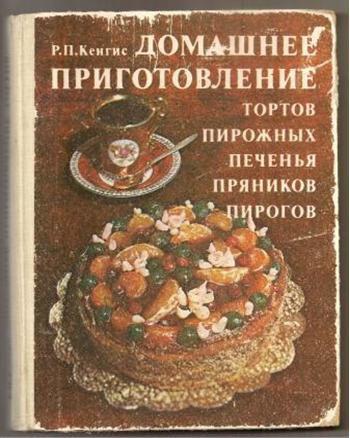
Attempts to shift the language of instruction catering home cooking from time to time taken. One of the classic Soviet authors who created the ageless confectionery guide for housewives was Robert Petrovich Kengis. The spillover from the mid-1950s many of his books became reference. Based on the standard, basic recipes Kengis still aspired to their author's adaptation to the home environment. The principle of his books is simple: from the types of dough - to specific food products. The popularity and circulation of these publications shows clearly the interest in them by the housewives. However, a number of his books, and was addressed to professional chefs.
Today, much has changed. Gostovskaya pastries once gone, disappeared from the shelves, and if there is, it really is not the same as it was before. Preservatives, enhancers, stabilizers, flavors ... and there are already those biscuits and cakes, puff tubes and baskets with a cream, simple biscuits, juicy pastries, "nut", custard rings with curd cream and a lot more then not ... But somehow interest our people to this culinary "heritage" does not disappear. And the old recipes take on a new breath.

Dessert Soviet diet - a living testimony to the evolution of our gastronomy of the XX century. In less than 70 years old sweet table has changed dramatically, and far away from the traditions of the national cuisine in an eclectic, but "rich" in the view of the culinary arts. And remember it made us curious film in the series "Made in USSR", in which we are involved with Olga as experts. Filmed TV company "Mir", he is called - "The sweet life».

That shot documentary - really informative. They tried to do a good job. I (already outside the film) I would like here to elaborate on that Soviet "dolce vita".
Indeed, the historical Russian cuisine typical of very limited use of sweets. In the mass, democratic table even at the beginning of the XIX century there were no cakes, creams or souffle. At the same time no one and did not mean to be called a Russian dessert meager. Just fanciful desserts role it played a fresh and canned fruits and berries, candy, pies, cakes, firewood, puddings, jelly, etc.
But little by little, gaining elegant desserts tastes of the Russians. And by the end of the XIX century the cake - an indispensable attribute of the holiday table. Say Molokhovetz in this period of more than 60 names. That's not counting all eclairs, mousses and jellies. There is much debate about whether they were part of the massive power of the population, but to deny their popularity in pre-revolutionary Russia is impossible.
The attitude to the Soviet regime it was initially wary. And it's not just that in the 20 years of good butter and cream were not a frequent visitor in the kitchen of our compatriots. There is, apparently, some other reason. The cake itself - did not immediately went into our diet. Here's a look - in the "Book of Tasty and Healthy Food" in 1939, only two mentions of it - "Cake Cookies" and "cheese cake". And he and the other left a strange impression of food, collected from improvised. But in the 1953 edition of all falls into place. There are familiar sponge cakes, almond, lemon, sand, vanilla, etc.

The end of the '50s and' 60s - this is the era heyday of Soviet and cakes. In 1956, workers of the Kiev confectionery factory im.Karla Marx [1] Konstantin Petrenko and Nadia Montenegro established the Soviet legend sweet - the cake "Kiev". Air-nut cakes, of which he was a (applied to 5 varieties of nuts) can of course be played today and in the home. But then a special industrial oven allows for a unique result. Also used for making cakes pre-fermented whites.
"Kiev" cake - a vivid example of Soviet-style "rich" food: 1 kg cake is not less than 600 g of cream and 400 g of protein a blank nut. It consists of two air-nut meringue cakes with layers of cream. Top - also cream with all sorts of patterns. On both sides - nut crumb. In general, such a symbol of socialist abundance.

In the mid-1960s technology of the "Kiev" cake was approved Minpischepromom USSR. In accordance with the prescription of the products included cashew nuts - are a largely determines its unforgettable taste. However, it is clear that this is an expensive ingredient, clearly not typical of Soviet cuisine. The explanation for this contradiction is simple. Mid-50s - the period of our active cooperation with India. Interested in the development of all spheres of the economy after independence, the government of the country in the face of the Soviet Union found an ideological ally on the basis of joint struggle against neo-colonialism. Soviet assistance to India is most clearly manifested in the creation of modern heavy industry. So just by 1961 in the country with our support it was built 8 large mills. In general, during the years 1955-60 the USSR had India's economic assistance in the amount of 681 million. Dollars. It is clear that the payment of this assistance shall not in hard currency, and rupees, which could buy only the traditional items of Indian exports - textiles, tea and cashew nuts are the same.
Soviet confectionery industry was literally "littered" these nuts are used for a wide variety of dishes. However, this period of "nut" abundance soon ended - Indians quickly realized that cashew can be delivered and for the currency. This was done at the expense of barter with the Soviet Union, which were absolutely not competitive in the free market prices. As a result, cashew recipe in the "Kiev" cake gradually replaced by hazelnuts. In place of that will soon come cheap peanuts.
Egg Cream (known as cream Charlotte) in this cake to 70 years at the request of sanitary inspectors is replaced by the creamy-buttery (heavier and saturated). And in the late 80's into it (as well as all other cream cakes) will add a cheap vegetable oil, palm oil, etc.

But back in the 50s. It was then on the shelves, new cakes and pastries - "Fairy Tale", "Abrikotin", "Cornucopia" baskets with cream. Pretentiousness of these products is consistent with the late-Stalinist Empire style in architecture and art. Indeed, while the cake was more than just a sweet dessert, it was a symbol of prosperity and wealth. These biscuits with oil rosettes survived to the late-Soviet period, when the main thing was to buy them in checked where honestly made of butter cream instead of margarine.
But public tastes gradually changed. And in the mid-60s confectionery fashion trends already meets the new socialist reality. "Before, cakes made in the form of flower baskets, a basket with mushrooms or a cornucopia from which poured cream chrysanthemum, roses, magnolia. Such a cake in appearance can be matched situation room and table setting in the style of Baroque, Rococo XVI-XVIII centuries, but now against the backdrop of modern interiors and new appointments he did not fit into the overall ensemble, "- wrote in 1969 the magazine" Food ».
"Pastoral mush, pretentiousness and fussiness, completely prevailed in the confectionery shops in the recent past, now given way to a new thematic content in the product design. The plant powdery confectionery Leningrad created, for example, cakes, "bride", "groom", "Circus." They have no bad taste sweet. Elegant oval cake "bride" all white. His finish - white roses of different sizes. In the "Bridegroom", somewhat similar in appearance to the previous cake, dominated by dark colors. Round cake "Circus" is decorated with figures of clowns »

Many of these experiments has sunk into oblivion. But something remained in the Soviet kitchen, becoming one of its symbols. In 1978, a group led by the Chief pastry pastry shop Moscow restaurant "Prague" Vladimir Mikhailovich Gural'nik creates a cake recipe "Bird's milk". It should be emphasized that the same name candy condensed milk with agar that time more than one year issued by the Moscow confectionery factory "Rot Front". However, attempts to modify the "cake to" failed. Here's how he talked about this V.Guralnik:
- The candy - delicious, and large volume - candy candy, gets stuck in your teeth! Half a beat! Introducing the cream, beaten egg whites, the proportion changed ... Replace seaweed gelatin agar - so now it is used everywhere, and then the exotic was terrible! Finally, after thousands of experiments the substance was unusually light and delicate.
The result was developed semi-finished biscuit-whipped. Due to the fact that the filling had long boil down, I had to replace gelatin (which is already folded at 100 degrees) on agar-agar (melting point about 120 degrees). According to the technology as confectionery mass had to boil down at 117 degrees - no more, no less.
Although cake recipe quickly sold to restaurants and factories, it was the most delicious candy is in the restaurant "Prague", which from the beginning of the 80s every day along the Arbat was allowed all buyers. And it was worth it! Strictly seasoned recipe (egg white, condensed milk, agar-agar), and the technology of preparation; a layer of air biscuit, air souffle and a thin layer of chocolate - all brought a cake worthy of glory. First shop produces 50-60 cakes a day, but soon had to increase production to 500 pieces. And the recipe was distributed throughout the USSR via Mosrestorantrest.

Restaurant associated with said origin and history of another famous cake. Open in 1955, the restaurant "Prague" was originally a "focused" mainly on Czech cooking. To study the experience regularly organized exchanges, trips chefs. Apparently, during one of the visits of Czech colleagues, and there was a prototype of the cake "Prague". In fact, it is somewhat simplified and modified version of the Austrian cake "Sacher". Here it was later arranged production of not less than the popular "Wenceslas" cake.
And then it would be appropriate to reflect: why the Soviet Union itself when all those cakes - "Kiev", "Prague", "Flight" (issued in catering) - rarely prepared in the home kitchen? Indeed, many "home" cakes in no way inferior to them in labor intensity, also demanded generously skills and craftsmanship.
The answer lies in a slightly different area. The fact that all the "obschepitovskie" Soviet cakes were formulated, approved in accordance with GOST or other document providing for mass cooking. The question whether it was possible in home cooking "to take 200 grams of flour, 250 grams of sugar, 393 grams of butter, 430 grams of eggs, 40, 4 g of cocoa, 16 g of molasses, etc." for the release of "28 to 61 servings of cake c. ", is rhetorical. But it was such a layout is based on the one provided for the product, "a collection of recipes" for the catering. That's why they managed to repeat the far every woman. In addition, the "nominal" was difficult to bake cakes at home and at the banal reason - due to lack of relevant products, nuts, poppy, vanilla, etc. That is, 30 years ago we clearly understood - these cakes we can, if desired, and the ability to bake at home, but these - only buy in a store or in the kitchen of the restaurant. Homemade recipes differed "from hand to hand" among friends, and store recipes, GOST, no one knew.

Attempts to shift the language of instruction catering home cooking from time to time taken. One of the classic Soviet authors who created the ageless confectionery guide for housewives was Robert Petrovich Kengis. The spillover from the mid-1950s many of his books became reference. Based on the standard, basic recipes Kengis still aspired to their author's adaptation to the home environment. The principle of his books is simple: from the types of dough - to specific food products. The popularity and circulation of these publications shows clearly the interest in them by the housewives. However, a number of his books, and was addressed to professional chefs.
Today, much has changed. Gostovskaya pastries once gone, disappeared from the shelves, and if there is, it really is not the same as it was before. Preservatives, enhancers, stabilizers, flavors ... and there are already those biscuits and cakes, puff tubes and baskets with a cream, simple biscuits, juicy pastries, "nut", custard rings with curd cream and a lot more then not ... But somehow interest our people to this culinary "heritage" does not disappear. And the old recipes take on a new breath.


